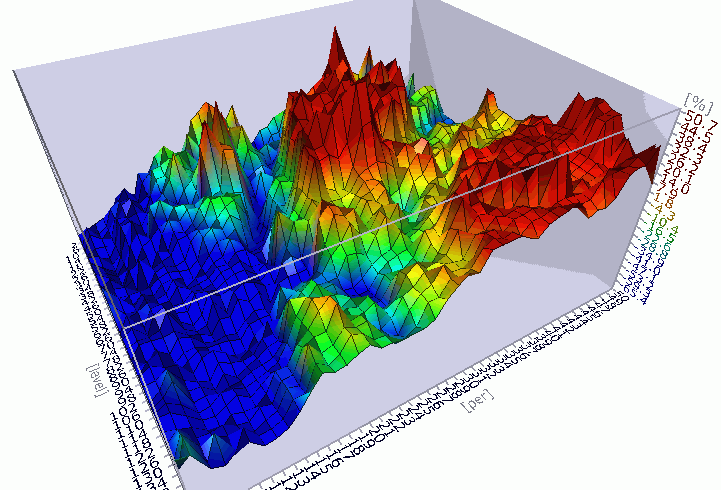 |
| How Quaint! |
Heat? Heat is to be welcomed. We East African Plains Apes, having evolved with sweat glands for that parched and arid million year landscape, can handle the heat. All we need is some wind to evaporate the sweat and cool us off. In fact, look at our descriptive terms for a light current of air - breeze, zephyr, melody. A puff. A waft. A whiff. A breath. A blessing. All hold the promise of refreshment and respite. Why even the sound evokes the feeling. A cool, cool breeze. Sweet, fresh, and sparkling clean.
But that's not what I want to talk about.
Neal Stephenson recently wrote an essay, "Innovation Starvation", decrying the slowing pace of innovation. I enjoy reading Stephenson's books, am sometimes engaged with certain of his ideas (or at least struck at how we have come to the same conclusions), appreciate his ability to spin an adventure yarn, am only occasionally disappointed in how his characters seem a bit too modern and hip and speak too often with Left Coast mannerisms, but on the whole consider him a pretty damn good author. But in this essay, I've got a lot to disagree with. More about that in a minute. Maybe.
One of the things that often struck me as wrong, or wrong-headed, was the use of the business metaphor describing all things biological. Biologists would describe the "cost" of a certain adaptation, or a "payoff" of a certain behavioral strategy, and I thought, well, they've got it all backwards. Rather than biologists using Smith or Galbraith or Friedman as their conceptual modellers in these casual descriptions, economists should be using Darwin to fathom the world of business and finance.
Biologists will often talk of a fitness landscape. The idea being that the further up on the landscape you are, the more fit an individual can be considered (given that the terrain is a metaphorical or visual aid for selection pressures). Thus, being up on a plateau is better than being down in a valley. Or supposedly so. It could be that the plateau is not the highest one. The highest one is called the "global maximum", others not so high are "local maxima". The problem with being on a local maxima, at least within the narrative of the fitness landscape, is that one must descend back down into the valley to ascend a higher peak. Well, this always struck me as a silly metaphor, but only because of the study of nonlinear population models I did in college, and as a computational hobby for years afterwards.
In the late 80s I decided that a much better term was fitness seascape, considering that models that best modeled population dynamics, competition, and cooperation, were not only nonlinear (with feedback loops), but also, well, dynamic. In other words, searching for a general solution, a permanent global maximum, was silly because, the accurate model, like Nature itself, had conditions changing over time. An individual sitting on a peak, could through external events, suddenly find itself sitting in a trough. And thus adaptations are always local. Or rather, non-local, but relative, with no absolute frame of reference. No Newtonian world view of static spaces and times.
And not just external circumstances. The fitness of the individual to local conditions changed local conditions. There is a self-referential feedback loop similar to Einstein's ideas about mass and gravity and space and time.
The classic visualization is the solar system viewed as heavy and light iron balls (mass) on a rubber sheet (space/time). The weight of the balls bends the sheet (gravity). The bends in the sheet changes the position of the balls. The "success" or fitness of an individual can change the local conditions of fitness in the same way- although not always as a bend downwards. Relativity being the key phrase here, as, in business as in biology, fitness is a relative positioning, not an absolute one.
So, on my own (honest!), I came up with the term fitness or adaptive seascape. Eventually, the world of academia caught up with me. David J Merrell is credited with coining the term, but actually, I did.
Back to Stephenson's essay, and what annoyed me. He decries the timidity and short-sightedness of private industry. Agreed. He decries the zero tolerance for risk that firms increasingly retreat to. Agreed. He claims that as a (partial) result, innovation is slowing in pace. Disagreed.
A casual glance at the numbers suggests that it is simply not so. True, less world-changing gadgetry is out there, or seems to be. But, in keeping with my ideas about the fallacy of preformationism, the epigenetic narrative, the narrative of history, we simply have not been around long enough to recognize the real consequences of our current crop of gadgets. (Just as it took some time to realize how the telegraph, and by extension speed-of-light communications, fostered the development of the modern corporation).
 |
| "Hi there! I'm Mister B!" |
Continuing under this assumption, we have arrived that the temporary gadget plateau. However, if you look at the current crop of innovations, you will note it is less about gadgets and much, much more about materials and processes. Nanotech. Synthetic biology. Spintronics. Metamaterials. Graphene. Quantum computing. Energy storage membranes. Superatoms. The world of materials engineering is very quickly to enter its golden age - assisted by chemists, biologists, and physicists.
Stephenson mourns the world where big stuff could be done. I would suggest that he bemoans a world where the easy stuff could be done. The stuff that looked risky, but actually wasn't.
The really truly risky stuff still lies ahead of us.

No comments:
Post a Comment